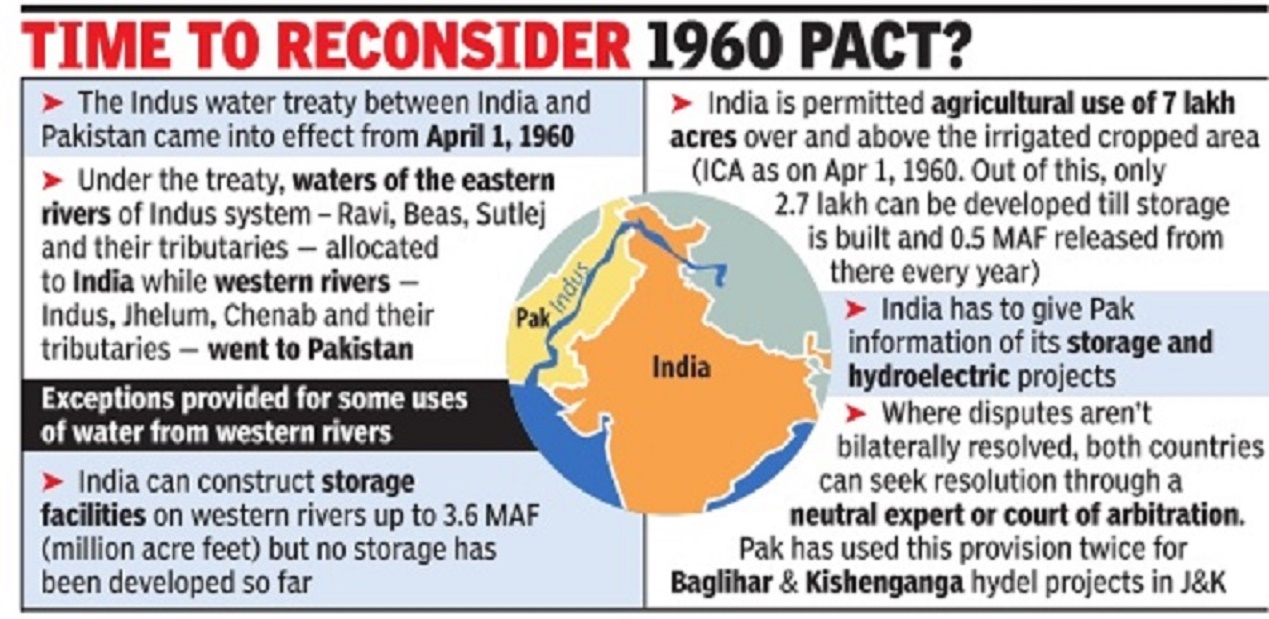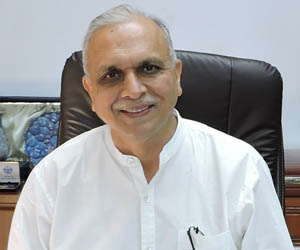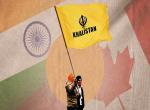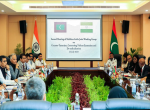The Indus Water Treaty (IWT) was signed by India and Pakistan in 1960 after nine years of tortuous negotiations, facilitated by the World Bank. Pakistan was extremely unhappy during the negotiations as it felt that the treaty was unfair to it. Eventually, it fell in line because the World Bank offered rewards along with an implicit threat that aid to Pakistan will be withheld if it did not agree to sign the Treaty.
The Treaty has withstood several wars and recurring tensions between the two countries and remains in force. The Permanent Indus Water Commission, set up under the treaty, continues to meet regularly to discuss technical issues concerning the implementation of the treaty. The last meeting of the commission was held in 2018. The 2019-20 meeting has been deferred by mutual agreement due to the ongoing coronavirus crisis.
At 60, the treaty is facing several challenges.
The IWT was a unique treaty which divided the six rivers of the Indus basin between India and Pakistan. This model of dividing the rivers has probably not been replicated anywhere in the world. It merely mirrored the partition of India along arbitrary lines in 1947 and took recourse to the brutal partition of rivers without any heed to hydrology, basin requirements and local needs.
The treaty gave India the unrestricted rights of the use of what is called the ‘Eastern Rivers’, namely, Ravi, Beas and Sutlej. Pakistan got the rights on the ‘Western Rivers’ namely Indus, Chenab and Jhelum with some restrictions which allowed for the use of these waters for agriculture and drinking purposes as well as the construction of limited storage facilities in the Jammu and Kashmir.
The treaty had no exit clause. Its dispute resolution mechanism consisted of the settlement of ‘differences’ at the ‘Neutral Expert’ level, and ‘disputes’ at the Court of Arbitration level. In 2005, Pakistan for the first time invoked the dispute resolution mechanism when India constructed the Baglihar ‘run of the river’ dam on the river Chenab. A Neutral Expert was appointed. He took two years to give his report.
More recently, Pakistan has insisted upon the World Bank to set up a Court of Arbitration to settle its objections over India’s Kishenganga and Ratle projects. India has strongly objected and asked the World Bank to instead set up a Neutral Expert under the treaty before the differences go to the Court of Arbitration.
Coming under pressure from the two sides, the World Bank sought to initiate both the processes simultaneously. This was objected to by India. It would have given India a reason to abandon the treaty. Realising the gravity of the situation, the World Bank ‘paused’ the process in 2017. The World Bank also offered on October 18, 2016 an extra-Treaty independent mediator for helping India and Pakistan choose from the aforementioned two modalities for difference/dispute resolution.1 According to media reports appearing in August 2020, the Bank has expressed its inability to move ahead and has left it to the two parties to agree on which mechanism to choose. It is unlikely that India and Pakistan will come to an agreement. The dispute resolution mechanism, the heart of the treaty, has been paralysed.
Pakistan has used the provisions of the treaty to object and delay every single project that India undertakes on the Western Rivers within the parameters of the treaty. This raises costs. The frequent recourse to the dispute resolution mechanism by Pakistan is a part of its tactics to delay the Indian projects. If the dispute resolution mechanism is discredited, the treaty will lose its meaning.
Water is not merely a technical issue that can be dealt with by a technical treaty that the IWT undoubtedly is. After all, it was negotiated by engineers who thought the division of the rivers was the best possible solution. Water is a sensitive political issue. Political factors, which lie outside the treaty, threaten the treaty itself.
In Pakistan, there is a strong but uninformed opinion that India is constructing hundreds of dams on the Western Rivers in violation of the treaty. A former Pakistani General who was in charge of Pakistan's Strategic Plans Division (SPD) even threatened the use of a nuclear option if India stopped the flows of water to Pakistan. On top of that, the global terrorist groups like the Lashkar-e-Taiba (LET) and Jaish-e-Mohammad openly threaten India with dire consequences if India took way ‘Pakistan's’ water.
In India, there is an acute dissatisfaction with the treaty. After the terror attacks by Pakistan based terror groups on the Indian Parliament in 2001, in Mumbai in 2008 and in Pathankot in 2016 and Uri in 2017, the Indian public opinion has hardened. The surgical strikes after the Uri attacks and Balakot airstrikes in 2017 have made the public opinion even stiffer. The government has come under pressure to abrogate the treaty because Pakistan is not a normal state and it remains a sponsor of terrorism.
The Indian government has been cautious. It has refrained from walking away from the treaty which it can do under the Vienna Convention on treaties using the ground that the other side is indulging in irresponsible state behaviour by supporting terrorism. Instead, it has followed the path of utilising its rights over the waters permissible under the treaty. It can, for instance, construct storage facilities up to 3.4 MAF on Western Rivers and also take steps to stop the flow of Eastern Rivers water to Pakistan by utilising them on the Indian side.
In India, it is commonly believed that about 2 MAF per year of water of the Eastern Rivers goes unutilized to Pakistan. The figure, according to Pakistani official data is about 4.90 MAF.2 Pakistan’sMinister of Water Resources, Mr. Muhammad Faisal Vawda presented some figures in the Pakistan National Assembly in 2019. Replying to a question on the water flows in Indus basin, the Pakistani Minister said, “It is to be noted that Eastern Rivers have already been allocated to India as per provisions of Indus Water Treaty (IWT) 1960, but uncontrolled/unavoidable flow escapages by India do occur which are efficiently utilized in integrated operation of the river system by IRSA”. 3 He openly admitted that Pakistan was getting the water of the Eastern Rivers because of India’s inability to stop these flows. This is a ‘gift’ from India to Pakistan.
Pakistan has stepped up its efforts to internationalise the Kashmir issue. India is deeply concerned about the growing Chinese presence in Gilgit Baltistan under the cover of China Pakistan Economic Corridor. The ongoing India China military standoff raises apprehensions of China Pakistan duo pressurising India on the borders. In the prevailing situation, there is always a possibility that India Pakistan relations could deteriorate further and the Indian government could come under renewed pressure on abrogating the treaty.
The treaty was signed 60 years ago. The technical provisions of the treaty are outdated. New technologies for the more efficient dam construction have come up. The concerns about climate change, efficient use of water, proper water management, pollution, basin development et cetera are not mentioned in the treaty. Assuming for a moment that India Pakistan relations were normal, there would be all the reasons for renegotiation of the treaty. Today, the treaty is seen as highly inequitable with India having rights over only 20 per cent of the waters of the Indus basin while Pakistan has the rights over 80 per cent of the waters.
The treaty is undoubtedly generous to Pakistan. It is unlikely that Pakistan would ever agree to renegotiate the treaty and undertake new obligations. India, on its part, would argue that it cannot remain a permanent victim of Pak sponsored terrorism and yet live with a treaty which the Indian public regards as unfair and inequitable. The World Bank, whose role is limited, has been unable to unblock the dispute resolution mechanism which can potentially unravel the treaty itself.
At sixty the Indus Water Treaty is precariously poised.
Endnotes
- https://www.mea.gov.in/lok-sabha.htm?dtl/27775/question+no3673+indus+water+treaty, accessed on 19.9.2020.
- Arvind Gupta, “ Pakistani Estimates of the Eastern River Water Flows”, at https://www.vifindia.org/2019/april/04/pakistani-estimates-of-the-eastern-river-water-flows%20, accessed on 19.9.2020.
- http://www.na.gov.pk/uploads/documents/questions/1550722725_143.pdf, accessed on April 01, 2019.
(The paper is the author’s individual scholastic articulation. The author certifies that the article/paper is original in content, unpublished and it has not been submitted for publication/web upload elsewhere, and that the facts and figures quoted are duly referenced, as needed, and are believed to be correct). (The paper does not necessarily represent the organisational stance... More >>
Image Source: http://indpaedia.com/ind/images/1/1e/Indus_Water_Treaty_the_basics.jpg











Post new comment